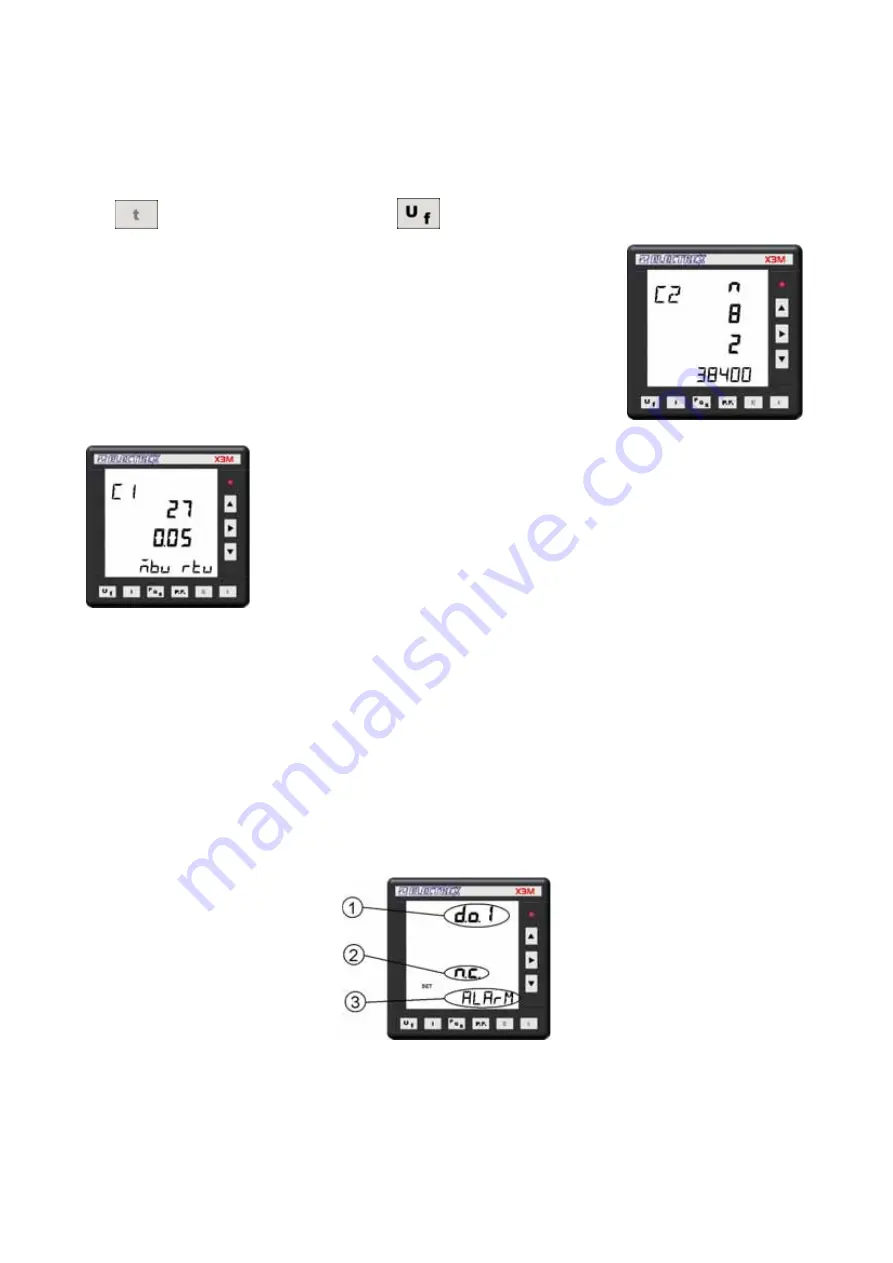
21
5.1.2.2 Communication Parameters Configuration
This menu appear only upon connection to the instrument of an RS-485 or an RS-232 optional module.
The setting of the RS485 communication characteristics requires to scroll the programming pages with two
keys;
The
key advances to the next page, the
key returns to the previous page
The first page is the following:
This page enables the setting of respectively:
-
communication
speed
-
number of data bits
-
parity
-
stop bits
All these data are correlated depending upon the stop bit value.
Additional parameters regarding the MODBUS communication protocol may be
set in the next page:
-
Mode: it may be configured to RTU or to ASC (ASCII) mode.
-
Slave
Address
-
Transmission delay; it stands for the time delay the instrument will wait prior
to reply to a data query. It is expressed in milliseconds, the default value is
100 msec and a 0 setting is also possible.
5.1.2.3 Output
Configuration
The instrument is equipped with 2 digital outputs that are set by default to operate as pulse outputs
proportional to P
∑
(output 1) and Q
∑
(output 2) at a rate of 1.000 pulses per kWh (or kvarh) referred to the
instrument range without any CT and PT multiplier.
The operating mode of digital outputs may be changed to operate as alarm output or as remote output
device controlled by the Modbus protocol.
When operating on the Modbus protocol, in order to ensure a protection to the outputs in case of
communication failure, it is possible to configure a watchdog timer (programmable from 0 to 60 minutes; 0 =
disabled).
The following entry fields are prompted (example for output 1):
(1) Digital out number
being programmed.
(2) Contact:
it configures the rest state of the output transistor.
n.c.
normally closed or
n.o.
normally open:
(3) Mode
of operation
:
PULSE
(default setting) for operation as pulse output
















































